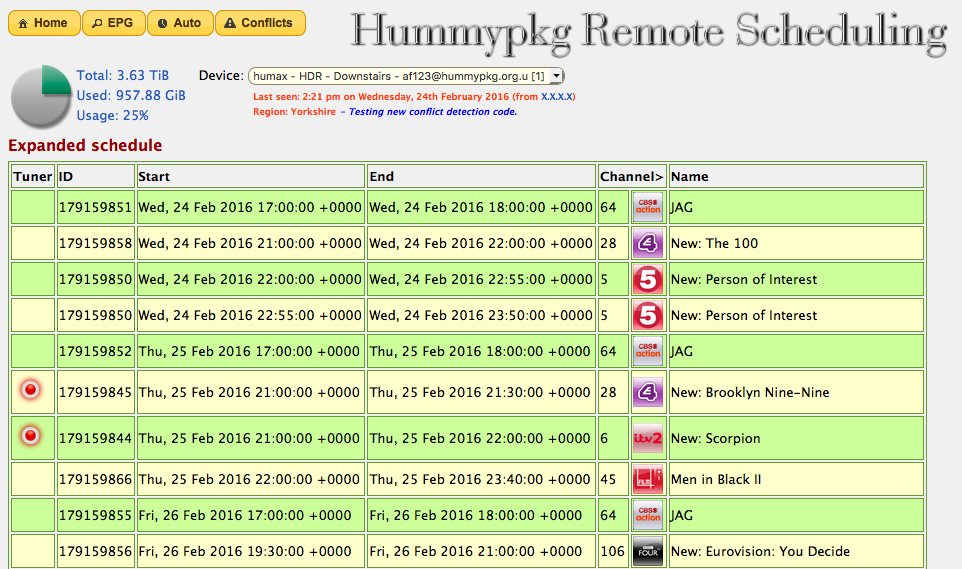I've been working on a new algorithm for detecting recording conflicts that is more accurate and takes all scheduled episodes into account. I've finished initial testing and it looks good but I'd appreciate some more people testing it and seeing what it looks like against their schedules.
To enable it you need to make sure that you have updated to the latest version of the rs package and then run the rs/newconflicts diagnostic on your Humax to turn this on or off (it's a toggle).
Once it's enabled, you'll see a note next to the region at the top of the RS web page and a new Conflicts button will appear at the top left. This takes you to a page which shows the full expanded schedule (one row for each event, even those which are future episodes). Any conflicts will be highlighted in pink and any events which require the use of more than one tuner have a red icon at the left hand side (they should appear in pairs). This is just to help work out if it's doing the right thing.
Whilst enabled, the new code will also be used for highlighting any conflicts on the main page, and for any conflict alerts that are sent via email. If everything looks okay then I will switch in the new code for the old and look at whether it is practical to implement this new algorithm in the on-box web interface too.

To enable it you need to make sure that you have updated to the latest version of the rs package and then run the rs/newconflicts diagnostic on your Humax to turn this on or off (it's a toggle).
Once it's enabled, you'll see a note next to the region at the top of the RS web page and a new Conflicts button will appear at the top left. This takes you to a page which shows the full expanded schedule (one row for each event, even those which are future episodes). Any conflicts will be highlighted in pink and any events which require the use of more than one tuner have a red icon at the left hand side (they should appear in pairs). This is just to help work out if it's doing the right thing.
Whilst enabled, the new code will also be used for highlighting any conflicts on the main page, and for any conflict alerts that are sent via email. If everything looks okay then I will switch in the new code for the old and look at whether it is practical to implement this new algorithm in the on-box web interface too.


